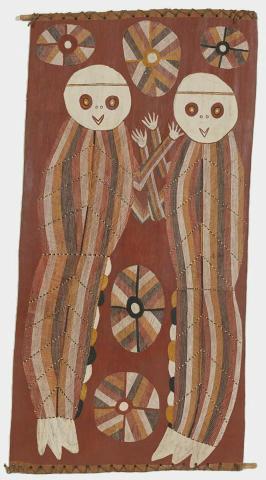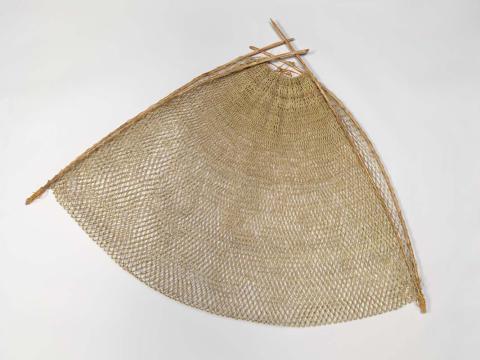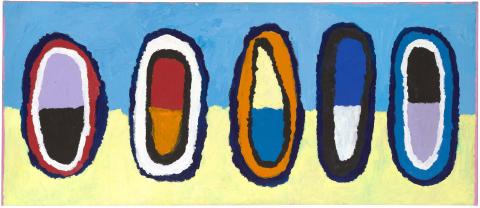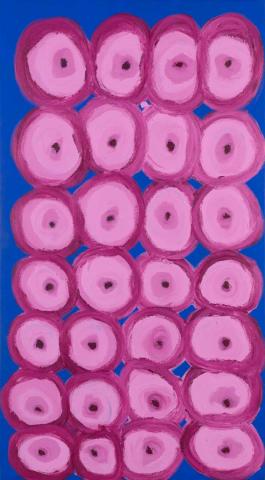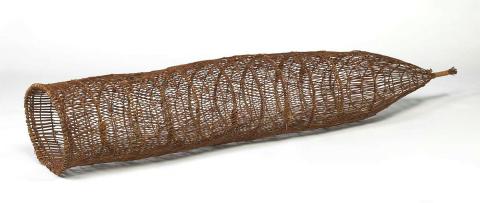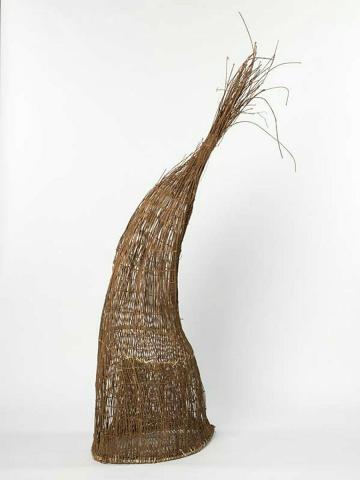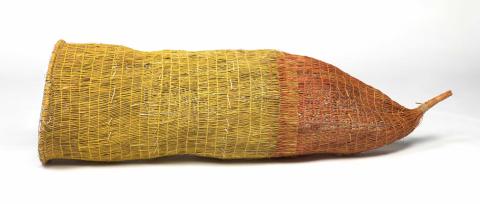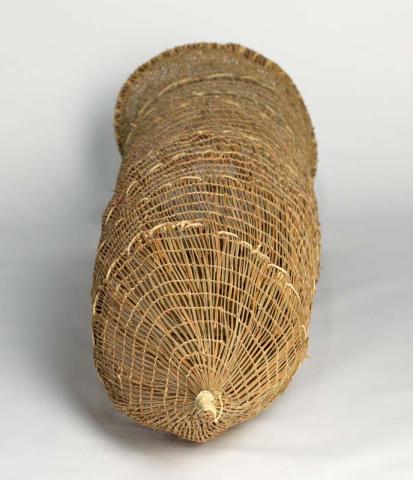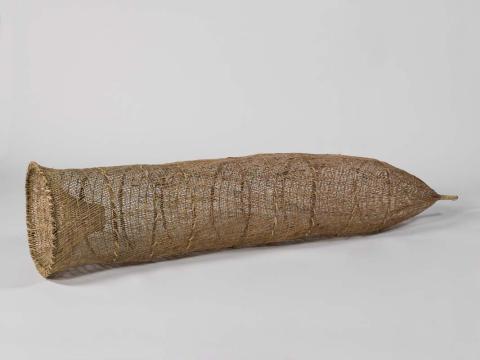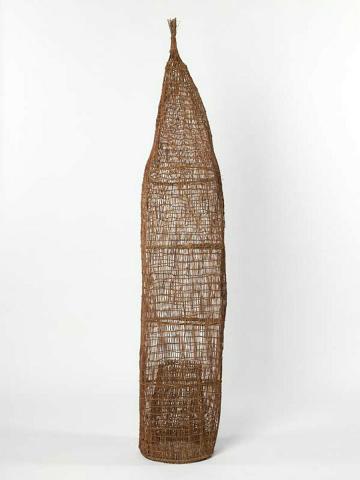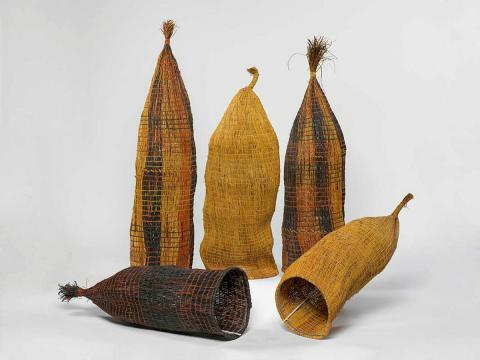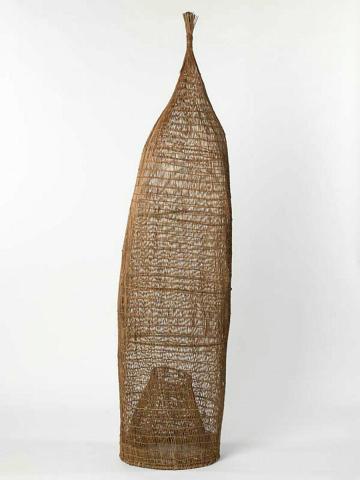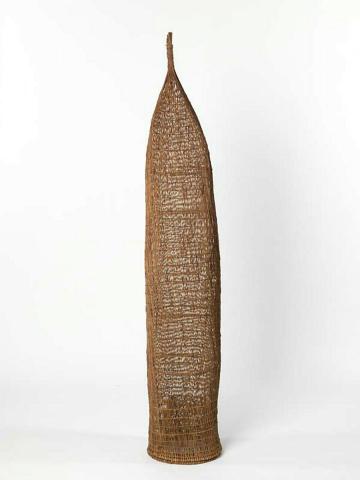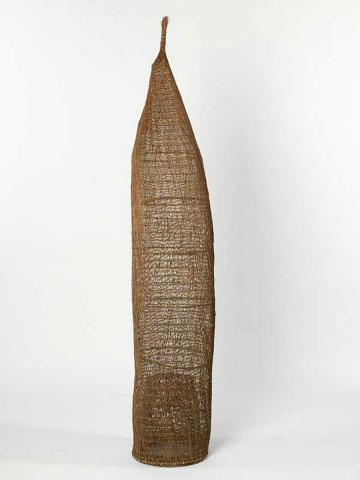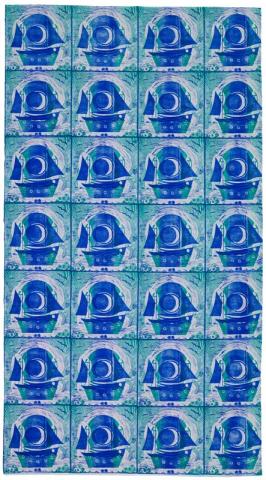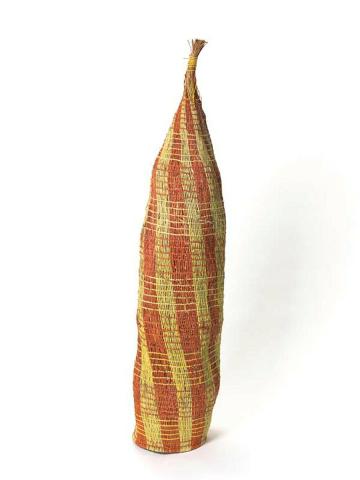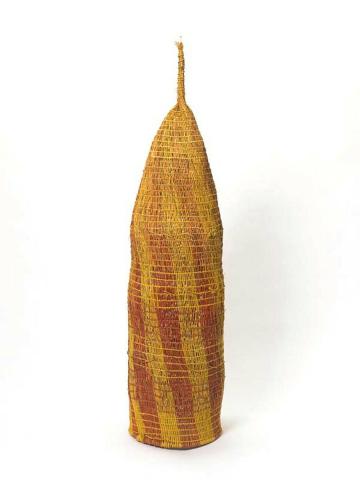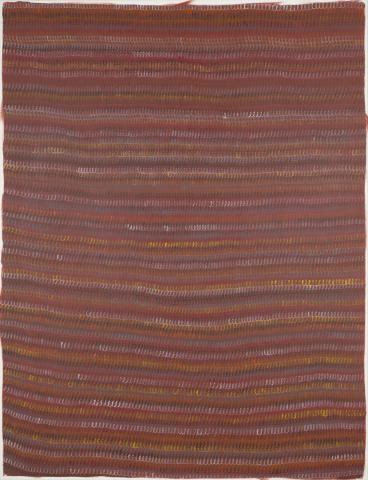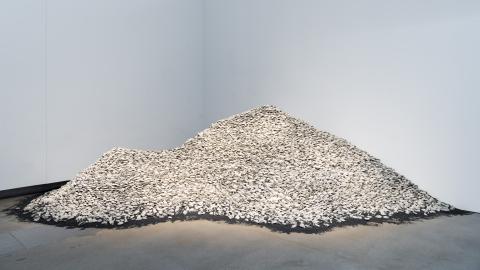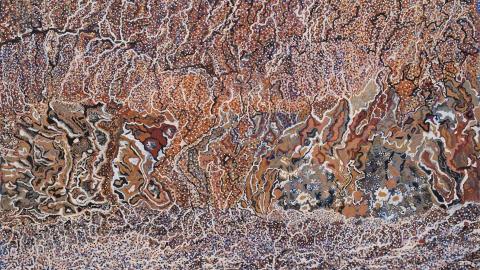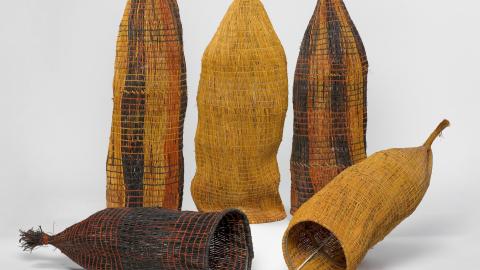TRAPS, TACKLE AND GEAR
‘Gone Fishing’
From inland freshwater regions to the ocean and islands of the Torres Strait, there are many specifically engineered tools and methods for catching a feed. These multifunctional objects are represented through cultural objects, paintings, sculptures and installation. The artworks here speak to the practical nature of fishing and include a range of spears, canoes and nets.
An installation of woven fish traps from the Maningrida region (Arnhem Land, Northern Territory) demonstrates regionally specific techniques that were perfected by hundreds of generations of the artists’ ancestors, bespoke to each environment and species of food source. Here, they are also celebrated as uniquely modelled forms of aesthetic beauty.
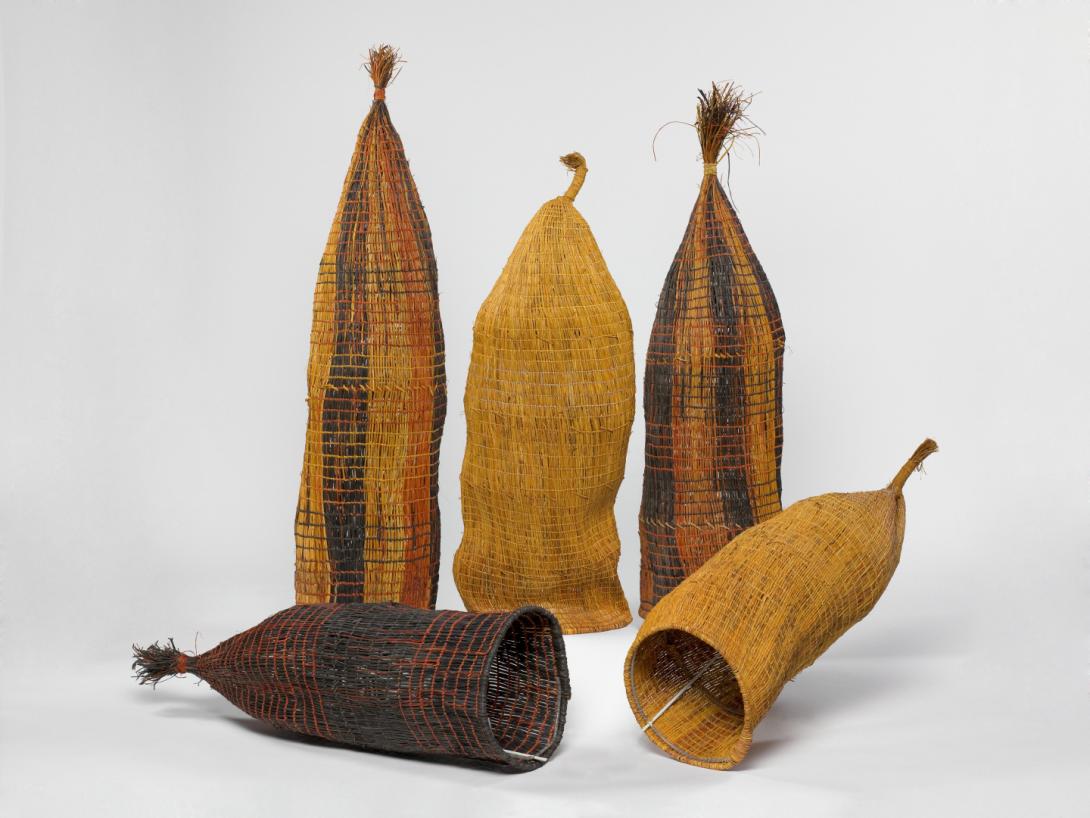
Installation view including five pandanus works: Fish trap 2004 and Fish trap 2004 (Sally Garrimarra / Ganalbingu people / Australia, b.1967 / Purchased 2004. Queensland Art Gallery Foundation / © Sally Garrimarra/Copyright Agency) and Shirley Malgarrich’s (Burarra/Anbarra peoples / Australia b.1947) Jina-bakara (fish trap) 2004 (Purchased 2004. Queensland Art Gallery Foundation / © Shirley Malgarrich), Fish trap 2004 and Fish trap 2004 (Purchased 2004. The Queensland Government's special Centenary Fund / © Shirley Malgarrich) / All works Collection: Queensland Art Gallery | Gallery of Modern Art / Photograph: Natasha Harth, QAGOMA
Sculptural fish and yabbie traps by Mandandanji artist Laurie Nilsen cleverly use discarded materials to create functional devices. Upcycled pedestal fans, chicken wire and even Sunlight soap were, according to the artist, all you needed to catch a feed — before the traps themselves became congested with more debris than food. Here, Nilsen has invoked images of a disposable lifestyle, overrun with plastic and endangering the natural environment.
These diverse sculptural works are complemented with paintings by senior artist Regina Pilawuk Wilson, who meticulously charts the geometric forms of woven netting onto canvas, illustrating delicate and geometric perspectives to these sturdy objects.
Objects included in ‘Traps, tackle and gear’:

Fish trap 2004
- GARRIMARRA, Sally - Creator

Fish trap 2004
- GARRIMARRA, Sally - Creator

Ningher (reed canoe) 2020
- GREENO, Rex - Creator

Fish trap 2003
- JIN-GUBARANGUNYJA, Lorna - Creator

Eel trap 2007
- KOOLMATRIE, Yvonne - Creator
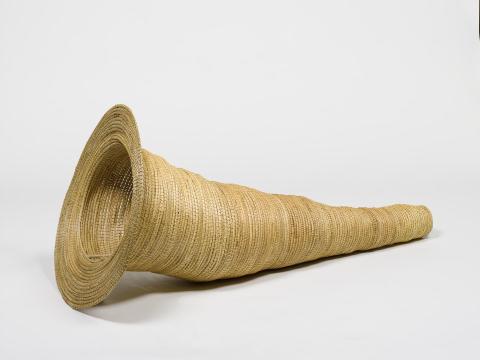
Eel trap 2007
- KOOLMATRIE, Yvonne - Creator

Yabbie trap 2008
- KOOLMATRIE, Yvonne - Creator

Walipun (Fish net) 2008
- KORDA, Kathleen - Creator

Pearling days 2002
- LAIFOO, Joey - Creator

Fish trap 2004
- MALGARRICH, Shirley - Creator

Fish trap 2004
- MALGARRICH, Shirley - Creator

Dhangal um ariak 2000
- MISSI, Billy - Creator

Wungarr (eel trap) 2005
- MURRAY, Ninney - Creator

Fish trap 2004
- NALMAKARRA, Mary - Creator

Once were Fishermen I 2014
- NILSEN, Laurie - Creator

Once were Fishermen II 2014
- NILSEN, Laurie - Creator

Baited 2010
- NILSEN, Laurie - Creator

An-gujechiya (Fish trap) 2006
- PRUDENCE, Indra - Creator

All kind fish 2/8 2022
- SAVAGE, Paula - Creator

All kind fish 8/8 2022
- SAVAGE, Paula - Creator

Weris (Fish scoop) 2004
- THAIDAY Sr, Ken - Creator

Whaleboat 2014
- THAIDAY Sr, Ken - Creator

Sea of Plenty 2010
- WARE, Moilang (Rosie) - Creator

Syaw (Fish net) 2004
- WILSON, Regina Pilawuk - Creator
